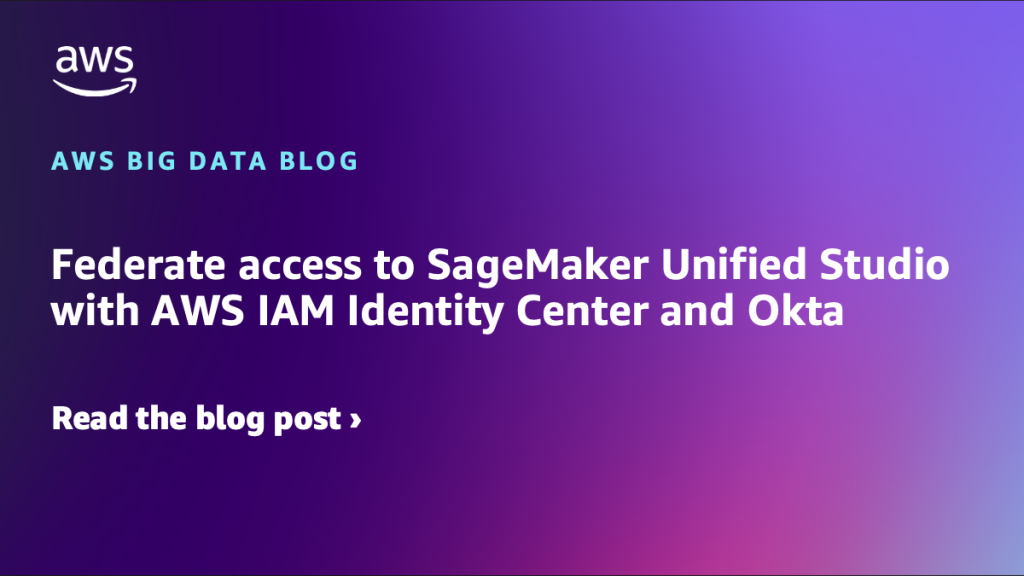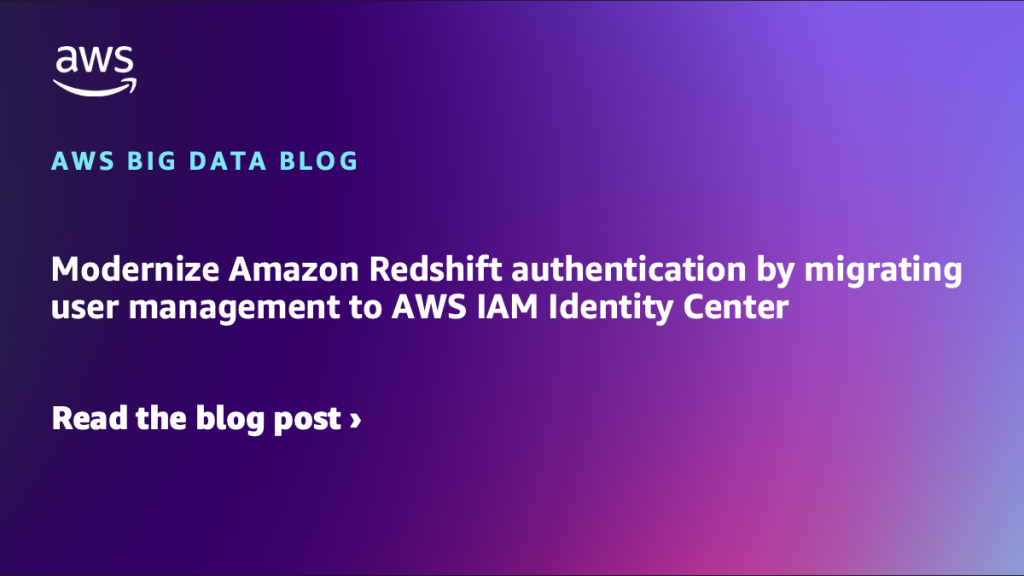AWS Big Data Blog
Category: Security, Identity, & Compliance
Federate access to SageMaker Unified Studio with AWS IAM Identity Center and Okta
This post shows step-by-step guidance to setup workforce access to Amazon SageMaker Unified Studio using Okta as an external Identity provider with AWS IAM Identity Center.
Achieve full control over your data encryption using customer managed keys in Amazon Managed Service for Apache Flink
Encryption of both data at rest and in transit is a non-negotiable feature for most organizations. Furthermore, organizations operating in highly regulated and security-sensitive environments—such as those in the financial sector—often require full control over the cryptographic keys used for their workloads. Amazon Managed Service for Apache Flink makes it straightforward to process real-time data […]
Modernize Amazon Redshift authentication by migrating user management to AWS IAM Identity Center
Amazon Redshift is a powerful cloud-based data warehouse that organizations can use to analyze both structured and semi-structured data through advanced SQL queries. As a fully managed service, it provides high performance and scalability while allowing secure access to the data stored in the data warehouse. Organizations worldwide rely on Amazon Redshift to handle massive […]
Trusted identity propagation using IAM Identity Center for Amazon OpenSearch Service
Now, by using trusted identity propagation, IAM Identity Center provides a new, direct method for accessing data in OpenSearch Service. In this post, we outline how you can take advantage of this new access method to simplify data access using the OpenSearch UI and still maintain robust role-based access control for your OpenSearch data.
Implement secure hybrid and multicloud log ingestion with Amazon OpenSearch Ingestion
In this post, we demonstrate how to configure Fluent Bit, a fast and flexible log processor and router supported by various operating systems, to securely send logs from any environment to OpenSearch Ingestion using IAM Roles Anywhere.
Secure access to a cross-account Amazon MSK cluster from Amazon MSK Connect using IAM authentication
In this post, we demonstrate a use case where you might need to use an MSK cluster in one AWS account, but MSK Connect is located in a separate account. We demonstrate how to implement IAM authentication after establishing network connectivity. IAM provides enhanced security measures, making sure your systems are protected against unauthorized access.
Simplify enterprise data access using the Amazon Redshift integration with Amazon S3 Access Grants
In this post, we show how to grant Amazon S3 permissions to IAM Identity Center users and groups using S3 Access Grants. We also test the integration using an IAM Identity Center federated user to unload data from Amazon Redshift to Amazon S3 and load data from Amazon S3 to Amazon Redshift.
Best practices for least privilege configuration in Amazon MWAA
In this post, we explore how to apply the principle of least privilege to your Amazon MWAA environment by tightening network security using security groups, network access control lists (ACLs), and virtual private cloud (VPC) endpoints. We also discuss the Amazon MWAA execution and deployment roles and their respective permissions.
Amazon SageMaker Lakehouse now supports attribute-based access control
Amazon SageMaker Lakehouse now supports attribute-based access control (ABAC) with AWS Lake Formation, using AWS Identity and Access Management (IAM) principals and session tags to simplify data access, grant creation, and maintenance. In this post, we demonstrate how to get started with SageMaker Lakehouse with ABAC.
Accelerate your analytics with Amazon S3 Tables and Amazon SageMaker Lakehouse
Amazon SageMaker Lakehouse is a unified, open, and secure data lakehouse that now seamlessly integrates with Amazon S3 Tables, the first cloud object store with built-in Apache Iceberg support. In this post, we guide you how to use various analytics services using the integration of SageMaker Lakehouse with S3 Tables.









